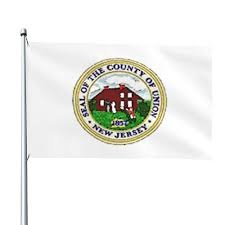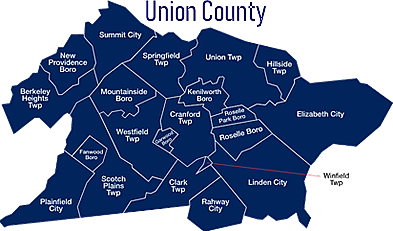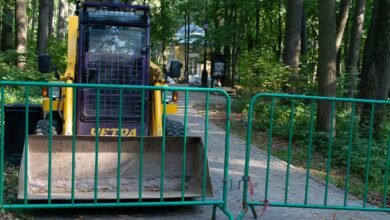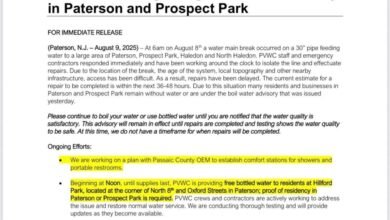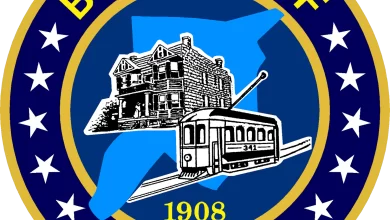
Union County, NJ: Movement, Memory, and the Muscle That Keeps New Jersey Going
Spanning from Elizabeth’s portside grit to the green quiet of Mountainside, Union County, New Jersey is more than a geographic region—it’s a crossroads of migration, resistance, and possibility. Known for its mix of industrial cities, suburban neighborhoods, and deep community roots, Union County is where the trains pass, the people stay, and generations keep building something better. It’s New Jersey’s working heart—and a place where equity and access are still being negotiated block by block.
Origin and History
Union County’s story is as much about people as it is about place.
- Lenape Land: Originally home to the Munsee Lenape people, Union County’s rivers, meadows, and woodlands were Indigenous homelands long before colonization.
- Colonial Roots: The county was once part of Essex County until it became New Jersey’s last-formed county in 1857—named to symbolize the “union” of the United States.
- Industrial Engine: Cities like Elizabeth and Linden thrived in the 19th and 20th centuries as centers of shipping, railroads, and manufacturing—drawing Black migrants from the South and immigrants from Europe and the Caribbean.
- Civic Transformation: Over time, towns like Plainfield and Roselle became hubs for Black excellence, political organizing, and civil rights activism.
Demographics
Union County is multilingual, multiracial, and multigenerational.
- Population: Approx. 575,000 residents (2020 U.S. Census)
- Cultural Composition: ~35% Latinx (primarily Dominican, Puerto Rican, and Salvadoran), ~25% Black/African American, ~30% white, ~7% Asian, and ~3% multiracial.
- Languages Spoken: Spanish, English, Haitian Creole, Portuguese, Tagalog, and Arabic are common across homes, schools, and storefronts.
- Immigrant Strength: About 30% of the population is foreign-born, making it one of NJ’s most internationally rooted counties.
Geography and Government
Union County is tightly connected—by rail, road, and regional interdependence.
- Size: 103 square miles
- County Seat: Elizabeth (also Union County’s largest city)
- Municipalities (21 total): Berkeley Heights, Clark, Cranford, Elizabeth, Fanwood, Garwood, Hillside, Kenilworth, Linden, Mountainside, New Providence, Plainfield, Rahway, Roselle, Roselle Park, Scotch Plains, Springfield, Summit, Union Township, Westfield, and Winfield.
- Governance: Led by a Board of County Commissioners. The county oversees social services, jails, parks, vocational-technical education, and regional elections.
Where We Thrive
Union County thrives in its people, protests, parades, and public programs.
- Education & Youth: Countywide magnet schools, public school districts, and programs like Union County College support students across the spectrum—from first-gen scholars to trade students.
- Black Legacy: From Roselle’s role in Black suburban expansion to Plainfield’s Black Panther history, the county holds deep roots in Black civic, spiritual, and cultural life.
- Immigrant Organizing: Elizabeth and Linden are home to dynamic networks of Latinx and Afro-Caribbean organizers, faith leaders, and business owners.
- Arts & Culture: Events like Union County’s Cultural Heritage Celebration, Rahway’s arts district, and Plainfield’s jazz legacy keep the soul of the county alive.
Fun Facts and Local Gems
- Elizabethport: A historic port and immigrant entryway with deep maritime and industrial roots.
- Roselle Firsts: In 1883, Roselle became the first community in the world to be lit by electric light using overhead wires—thanks to Thomas Edison’s system.
- Plainfield’s Music Legacy: Known as “The Queen City,” Plainfield birthed the funk group Parliament-Funkadelic and remains a musical touchstone.
- Union County Parks System: Over 6,200 acres of green space, including Warinanco Park, Echo Lake Park, and the Watchung Reservation.
Challenges and Change
Union County’s communities are strong—but they still face systemic hurdles.
- Housing Displacement: Rising rents in places like Elizabeth and Plainfield are pushing out longtime residents, while wealthier towns remain exclusionary through zoning.
- School Inequities: Significant differences in school funding, safety, and student opportunity exist between municipalities—often reflecting patterns of segregation and class.
- Policing & ICE Enforcement: Elizabeth and surrounding towns have long histories of immigration enforcement and over-policing in Black and Latinx communities.
- Environmental Justice: Industrial pollution from port activity, traffic, and factories impacts low-income and BIPOC neighborhoods—especially in Linden and Elizabeth.
Community Voices
“You hear a lot about the Garden State Parkway—but it’s the people in this county who do the planting. Black folks, immigrants, single moms, elders—we’ve built these towns from the ground up.”
— Luis M., Roselle-based youth mentor and father of three
Why Union County Matters
Union County is a microcosm of the American story—migration, labor, struggle, and joy. From public housing to PTA meetings, from Dominican salons to Jamaican patty shops, from student walkouts to Juneteenth parades, Union County pulses with life and legacy. The people here aren’t just surviving—they’re shaping the next era of community.
HFYC uplifts Union County because its truth lives in every block party, every protest, every kitchen table—and those stories deserve to be heard.
Call to Action
Live in Union County? Know a student, elder, organizer, educator, faith leader, or artist changing your neighborhood?
Let us help tell their story.
Submit a feature, nominate a changemaker, or reflect on what Union County means to you—from the corner store to the courthouse steps.
